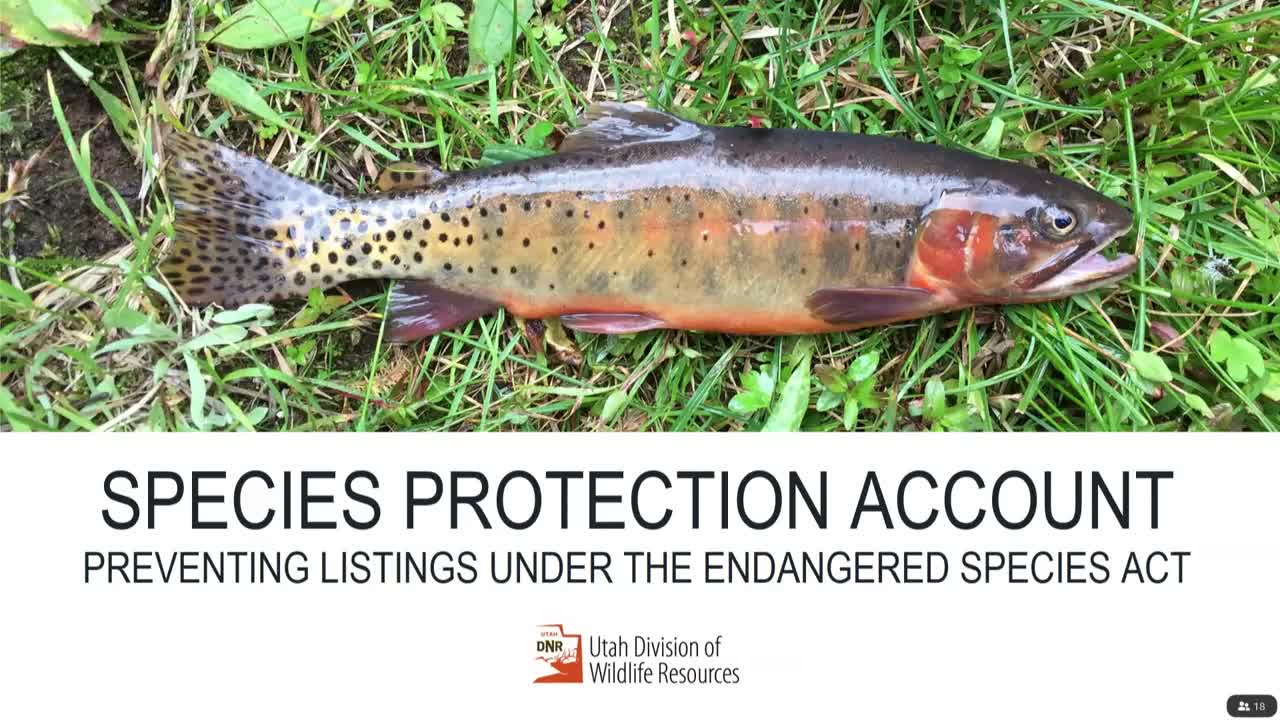Utah wildlife officials tackle endangered species crisis
August 21, 2024 | Utah Interim, Utah Legislative Branch, Utah
This article was created by AI summarizing key points discussed. AI makes mistakes, so for full details and context, please refer to the video of the full meeting. Please report any errors so we can fix them. Report an error »

During a recent government meeting, officials from Utah's Division of Wildlife Resources highlighted the state's impressive biological diversity and the ongoing efforts to protect threatened and endangered species. Sarah Segert, the recovery programs chief, emphasized Utah's ranking as 10th in biological diversity among all 50 states, attributing this to the state's unique landscapes and geological history.
The discussion centered around the Species Protection Account, established in 1997, which aims to recover species listed as threatened or endangered under the Endangered Species Act (ESA) and to prevent other species from reaching that status. Segert noted that while funding for game species comes from hunting and fishing licenses, non-game species often lack similar financial support, making the Species Protection Account crucial for conservation efforts.
The officials reported success in downlisting and delisting certain species, with a hopeful outlook for the Ute ladies' tresses, which could soon be delisted, potentially saving the state millions annually. Over the past two decades, Utah has successfully prevented 27 species from being listed, showcasing the effectiveness of data collection and conservation initiatives funded by the Species Protection Account.
The meeting also addressed the increasing number of ESA listing petitions, which have placed a strain on the Fish and Wildlife Service due to a backlog in processing. Segert explained that the state participates in four fish recovery programs aimed at balancing economic development with species recovery, ensuring that conservation efforts continue alongside growth initiatives.
Overall, the meeting underscored the importance of proactive conservation measures in Utah, highlighting the interconnectedness of wildlife protection, economic stability, and community well-being.
The discussion centered around the Species Protection Account, established in 1997, which aims to recover species listed as threatened or endangered under the Endangered Species Act (ESA) and to prevent other species from reaching that status. Segert noted that while funding for game species comes from hunting and fishing licenses, non-game species often lack similar financial support, making the Species Protection Account crucial for conservation efforts.
The officials reported success in downlisting and delisting certain species, with a hopeful outlook for the Ute ladies' tresses, which could soon be delisted, potentially saving the state millions annually. Over the past two decades, Utah has successfully prevented 27 species from being listed, showcasing the effectiveness of data collection and conservation initiatives funded by the Species Protection Account.
The meeting also addressed the increasing number of ESA listing petitions, which have placed a strain on the Fish and Wildlife Service due to a backlog in processing. Segert explained that the state participates in four fish recovery programs aimed at balancing economic development with species recovery, ensuring that conservation efforts continue alongside growth initiatives.
Overall, the meeting underscored the importance of proactive conservation measures in Utah, highlighting the interconnectedness of wildlife protection, economic stability, and community well-being.
View full meeting
This article is based on a recent meeting—watch the full video and explore the complete transcript for deeper insights into the discussion.
View full meeting

